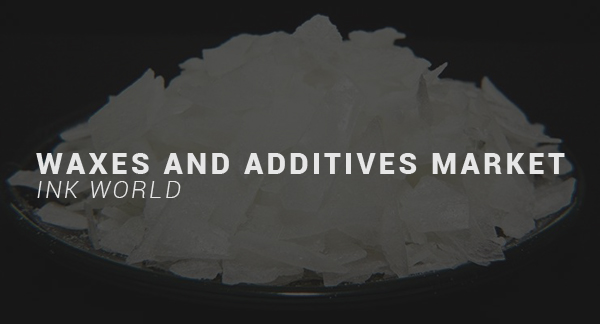Industry News, Inks
2017 The Waxes and Additives Report

Industry News, Inks

The global ink additives market was valued at $592.8 million in 2015 and is projected to reach $793.6 million by 2021, at a CAGR of 4.9% from 2016 and 2021. This is according to a new study by Markets and Markets, called “Ink Additives Market by Type (Rheology Modifiers, Slip/Rub Materials, Defoamers, Dispersants), Technology (Water-based, Solvent-Based), Process, Application (Packaging, Publishing, Commercial Printing), Region – Global Forecast to 2021.” According to the report, additives that offer excellent performance characteristics at reduced costs and have a lower impact on the environment are expected to lead in the ink additives market.
Geographically, the areas expected to witness increasing demand are China, India, Brazil and South East Asia. The Asia-Pacific region is the largest market for ink additives, in terms of value, followed by North America and Europe. The US, Japan, China, India and Germany are the largest consumers of ink additives.
Researchers from Markets and Markets found that easy availability of raw materials and inexpensive labor, coupled with significant domestic demand, make the Asia-Pacific region market the most attractive one for industry participants. The high demand for flexible packaging in the US is expected to drive the overall ink additives consumption in North America.
Several international additives manufacturers concur with the findings of this research. According to David S. Grabacki, president of Keim Additec Surface USA, the fastest growing segment for additives is digital printing.
“We see major changes and opportunities on the horizon for both ink and substrates. Globally, South East Asia and China continue to be the largest markets for growth,” he said.
Printing inks and coatings are another area of focus in this market. Rich Czarnecki, technical director at Micro Powders, said that wax additives for printing inks and coatings is a major market for Micro Powders.
“In fact,” he said, “the graphic arts market falls within the top five of all sectors for our global industrial division. Our growth has certainly been with higher value end applications, including food packaging and soft touch coatings.”
In addition to the increasing performance of additives, growth in this market is also propelled by one of its challenges: increasing international regulations.
According to Kevin Quinn, surface modifiers technology manager at Lubrizol Performance Coatings, regulatory compliance continues to challenge and drive the largest growth.
“The most successful wax additives will have the broadest compliance for food grade applications around the globe,” he said.
As retail competition increases, so, too, do the requirements of customers in this market. Quinn said that Lubrizol has seen increased demand for smaller wax particles with excellent rub resistance, lubricity and processing. This demand, he said, is driven by the growth of digital printing applications.
“Pressures for maintaining or reducing raw material costs to the ink manufacturing suppliers continue to drive the analog printing market. The outlook here is difficult in the coming months with anticipated monomer and polymer price increases,” he said.
Jerry Trauth, product manager for wax/ink applications at Kustom Group, said that help, support and a quick response to everyday problems are still essential for success.
“Whether they are calling from their lab or the pressroom, a live body they can reach for immediate technical support is vital. Kustom has built its reputation by offering hands-on support to both the technical and sales force of our ink customers. Also high on the list is turn around on orders, more pack options to choose from, and support with occasional rush orders,” he said.
Grabacki noted that there is one requirement universal across all markets and industries: price.
“When a customer considers using an additive, they clearly first focus on achieving a desired performance,” he said. “Of course, this must be accomplished with reasonable cost efficiency.”
Waxes and additives manufacturers have the unique challenge of producing products that are globally compliant and, very often, safe for food contact.
“Coating and ink formulators prefer to use raw materials with the widest range of food contact approvals as well as requiring global registration, creating challenges in the development of new and improved additive solutions,” Quinn said.
He continued, “Additives based on renewable resources have been introduced over the past several years. The challenge in this market is to maintain performance with renewable resourced raw materials without compromising performance or increasing cost to use. The increasing use of (and the desire to use) digital print in packaging applications requires the development of new dispersant and additive technologies that provide the improved particle size and viscosity stability required in inkjet combined with the required regulatory profiles and value-in-use demanded by the end use market. This is an area of continuing R&D at Lubrizol.”